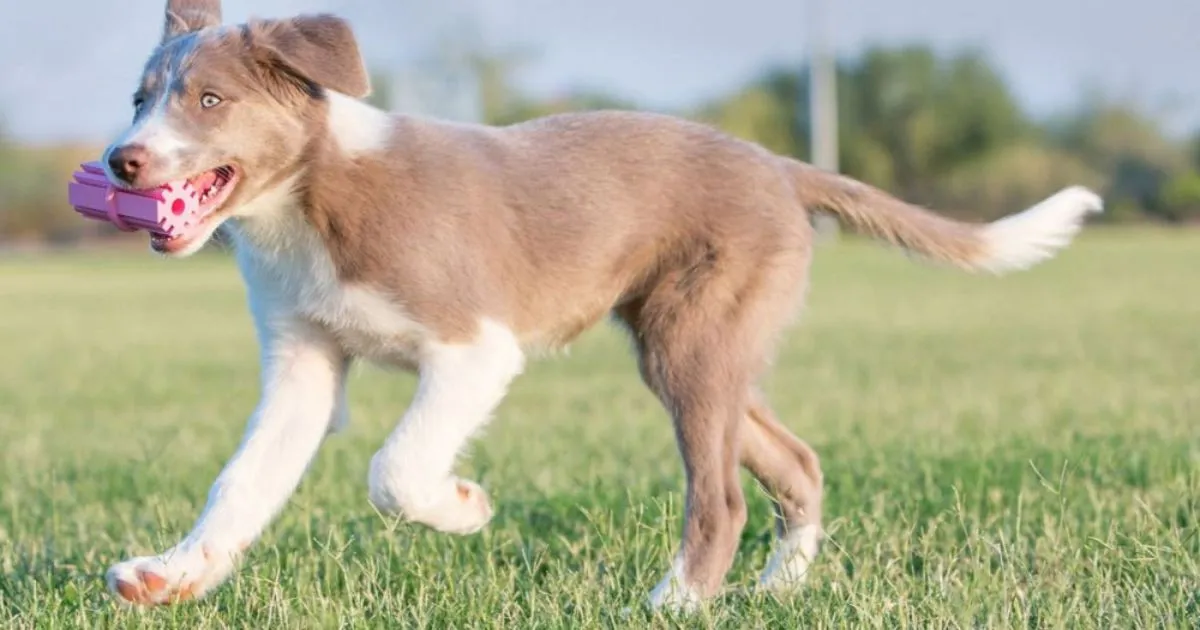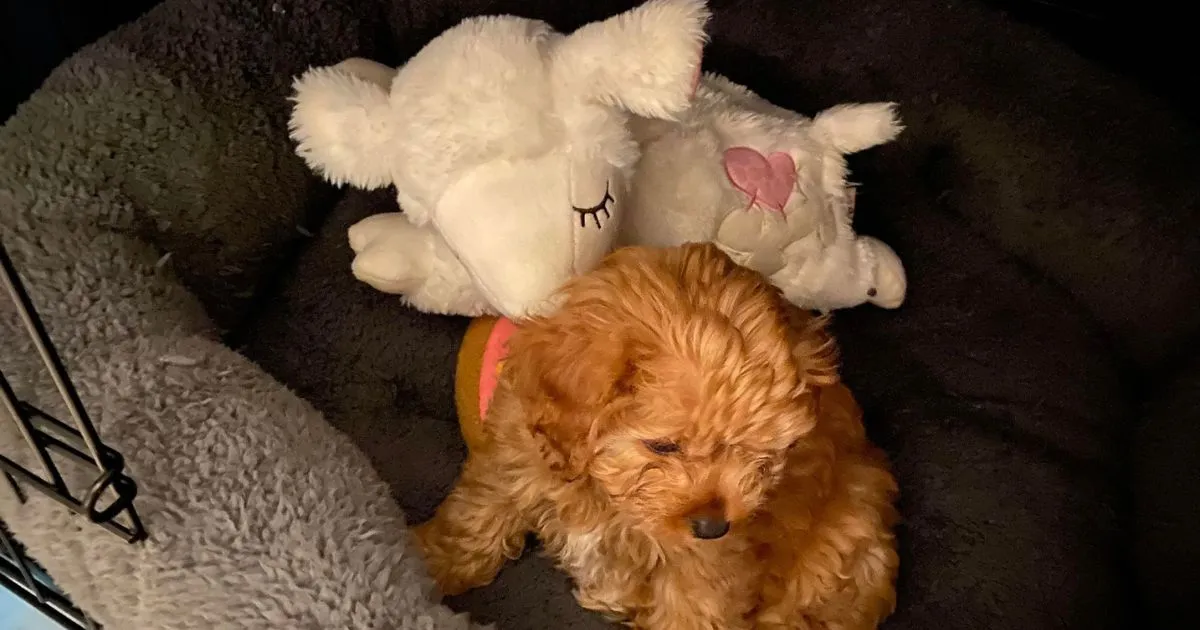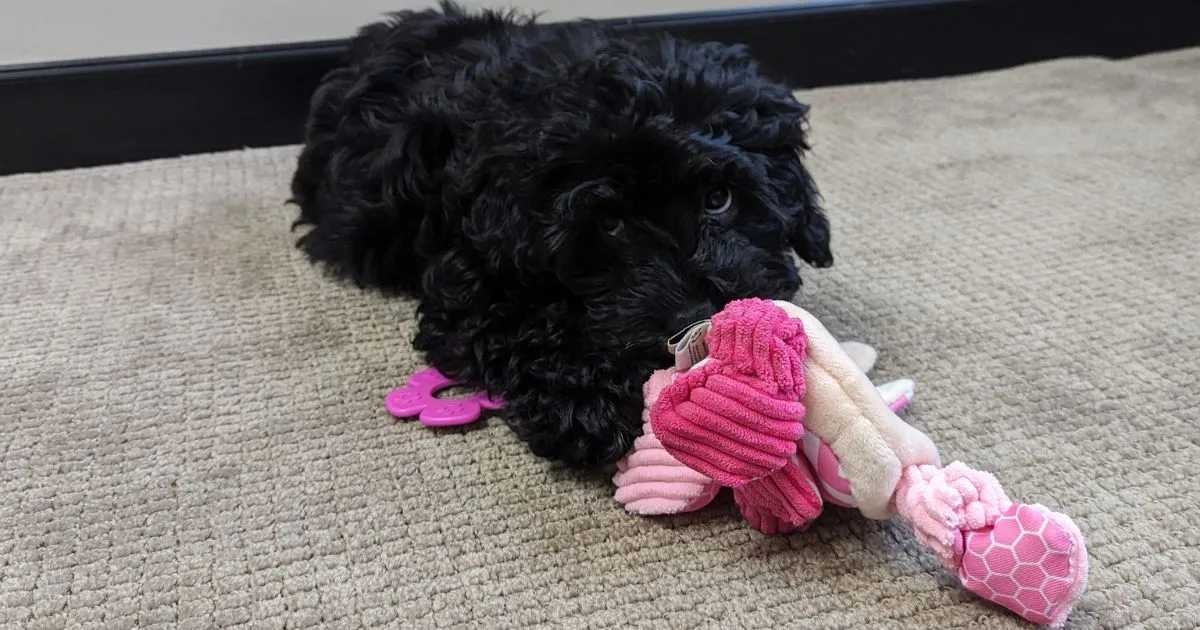Bringing an 8-week-old puppy into your home is an incredibly joyful experience, marking the beginning of an exciting journey in your new pet’s life. At this tender age, puppies are bundles of curiosity and energy, navigating a world full of new sensations and learning experiences. Choosing the right toys for your 8-week-old puppy isn’t just about providing entertainment; it’s a critical aspect of their healthy development, addressing everything from teething discomfort to cognitive growth and fostering a strong bond with you.
Safe, engaging, and developmentally appropriate toys play a pivotal role in shaping a well-adjusted adult dog. They offer an essential outlet for natural puppy behaviors, help prevent destructive chewing, and serve as valuable tools for training and socialization. This comprehensive guide will walk you through the specific needs of an 8-week-old puppy, crucial safety considerations, and the best types of toys to support their physical and mental well-being, ensuring endless hours of safe and beneficial playtime.
Understanding the Unique Needs of an 8-Week-Old Puppy
At 8 weeks old, a puppy is in a critical stage of rapid development. Their bodies and minds are growing at an incredible pace, and their needs are quite distinct from those of an older dog. Understanding these specific requirements is key to selecting the most beneficial toys.
Teething Relief and Healthy Chewing Habits
One of the most prominent needs of an 8-week-old puppy is managing the discomfort of teething. Their baby teeth are either just coming in or are getting ready to be replaced by adult teeth. This process can cause sore gums, leading puppies to seek relief by chewing on almost anything they can get their paws on. Providing appropriate puppy teething toys helps alleviate this discomfort while redirecting their chewing instincts away from furniture and personal belongings, establishing positive chewing habits from an early age.
Fostering Cognitive Development and Problem-Solving
An 8-week-old puppy’s brain is like a sponge, constantly absorbing new information. Engaging their minds with stimulating toys is just as important as physical exercise. Interactive puppy toys and puzzle feeders can challenge them mentally, encouraging problem-solving skills and critical thinking. These toys can help prevent boredom, which often leads to unwanted behaviors, and contribute to a well-rounded and intelligent canine companion.
Strengthening Social Skills and Owner-Puppy Bond
Playtime is a powerful tool for building trust and reinforcing the bond between you and your puppy. Toys that encourage gentle interaction, such as soft tug ropes or retrieve toys, provide opportunities for positive social exchanges. These shared moments of play help your puppy learn boundaries, understand social cues, and develop confidence in their relationship with you. This early bonding is fundamental for future training and a harmonious household.
Energy Outlet and Preventing Destructive Behavior
Puppies at this age are brimming with energy. Without proper outlets, this energy can manifest as destructive behavior. Toys provide a healthy way for puppies to burn off excess energy, satisfy their natural urges to play, chase, and explore. Appropriate toys can also serve as a distraction during periods of separation, helping to ease anxiety and prevent loneliness. For your energetic 8-week-old pup, choose toys that encourage growth and fun. Prioritize chew toys for teething, tug-of-war toys for bonding, and puzzle toys for mental stimulation. Always supervise playtime to ensure safety and fun.
Essential Safety Considerations When Selecting Puppy Toys
When selecting toys for an 8-week-old puppy, safety should always be your paramount concern. Puppies are naturally curious and will mouth, chew, and often attempt to swallow small objects, making careful toy selection absolutely vital.
Appropriate Size to Prevent Choking Hazards
The size of a toy is crucial. A toy that is too small can easily become a choking hazard, lodging in your puppy’s throat or digestive tract. As a general rule of thumb, choose toys that are larger than your puppy’s mouth when fully open. This prevents them from swallowing the toy whole. However, also ensure the toy isn’t so large that your puppy cannot comfortably carry or manipulate it. If in doubt, opt for a slightly larger toy.
Durable and Non-Toxic Materials
Puppies are vigorous chewers, even with their tiny teeth. Avoid toys made from brittle plastics that can splinter, or soft rubber that can be easily torn into small, ingestible pieces. Instead, opt for toys made from sturdy, durable materials like hard rubber or robust, tightly woven rope. Always check that the materials are non-toxic and specifically designed for puppies, as they are likely to ingest small amounts of the toy over time.
Inspecting for Hidden Dangers
Just because a product is marketed as a “dog toy” doesn’t automatically mean it’s safe for an 8-week-old puppy. Many soft toys, for instance, contain small parts such as buttons, ribbons, bells, or squeakers that can easily become dislodged and swallowed. These can pose significant choking risks or lead to internal obstructions. Before introducing any new toy, meticulously inspect it for any loose components or potential weak points that your puppy could chew off. If you find anything suspicious, it’s best to err on the side of caution and avoid giving it to your puppy.
Supervision is Key
Regardless of how carefully you’ve selected a toy, constant supervision during playtime is non-negotiable for young puppies. This allows you to intervene immediately if a toy breaks, if your puppy struggles with a piece, or if they begin to chew on something inappropriate. Supervised play not only ensures their safety but also provides opportunities for positive reinforcement and strengthening your bond. If you’re looking for durable options, consider exploring best dog toys for chewers uk for future reference, though for 8-week-olds, puppy-specific durability is paramount.
Top Picks: Best Types of Toys for 8-Week-Old Puppies
When building your puppy’s toy collection, focus on variety to meet their diverse developmental needs. Here are some of the best types of toys for 8-week-old puppy.
Chew Toys: Soothing Sore Gums and Promoting Dental Health
Chew toys are indispensable for an 8-week-old puppy, offering much-needed relief for their sore gums during the teething phase. They also help establish appropriate chewing behaviors, preventing your puppy from destructive habits. When choosing chew toys for 8 week old puppy, look for those specifically designed for puppies, made from softer rubber or flexible materials that are gentle on developing teeth yet durable enough to withstand chewing.
- Freezable Teethers: Toys that can be chilled in the freezer provide a cooling sensation that can significantly soothe inflamed gums. These are especially great for puppies on hot days.
 Frozen cactus teething toy for puppiesA great example is the All For Paws Pups Cactus Chill Teething Toy, which provides cooling comfort. You can find more options specifically for cooling relief by looking for teething toys for puppies that freeze.
Frozen cactus teething toy for puppiesA great example is the All For Paws Pups Cactus Chill Teething Toy, which provides cooling comfort. You can find more options specifically for cooling relief by looking for teething toys for puppies that freeze. - Rope and Fabric Chews: Made from jersey and rope woven together, these can be soft enough not to damage puppy teeth, while offering a satisfying texture for chewing. They are also excellent for gentle games of tug-of-war, helping with bonding. Ensure these are tightly woven and not easily unraveled to avoid ingestion of loose strings.
 Puppy sweater rope toy for tug-of-warThe All For Paws Pups Sweater Rope is a good example of such a toy. For those in the UK, exploring best puppy toys for teething uk might offer geographically specific options.
Puppy sweater rope toy for tug-of-warThe All For Paws Pups Sweater Rope is a good example of such a toy. For those in the UK, exploring best puppy toys for teething uk might offer geographically specific options.
Interactive & Puzzle Toys: Engaging Their Young Minds
Keeping puppies engaged mentally is vital for their cognitive development and helps prevent boredom. Interactive and puzzle toys challenge puppies to think, problem-solve, and use their natural instincts to earn a reward, usually in the form of a treat.
- Treat-Dispensing Toys: These toys require your puppy to manipulate them to release treats, providing mental stimulation and rewarding their efforts. They are excellent for keeping puppies occupied and teaching them perseverance.
 Red KONG Puppy treat puzzle toyThe KONG Puppy, a variation of the classic KONG, is designed with softer rubber for puppy teeth and can be stuffed with treats. Its unpredictable bounce also makes it great for fetch.
Red KONG Puppy treat puzzle toyThe KONG Puppy, a variation of the classic KONG, is designed with softer rubber for puppy teeth and can be stuffed with treats. Its unpredictable bounce also makes it great for fetch. - Lick Mats: These silicone mats with textured surfaces can be smeared with wet treats like peanut butter or canned dog food. They provide a calming and distracting activity, perfect for anxiety-inducing situations like bath time or crate training.
 Anti-anxiety bath lick mat shaped like a duckThe All For Paws Calming Pals Anti-Anxiety Bath Duck is a good illustration, suctioning to a wall to distract puppies.
Anti-anxiety bath lick mat shaped like a duckThe All For Paws Calming Pals Anti-Anxiety Bath Duck is a good illustration, suctioning to a wall to distract puppies. - Multi-Purpose Teething Sticks: Some teething toys double as puzzle toys, featuring grooves where treats can be hidden. These offer both chewing relief and mental engagement.
 Puppy teething stick with grooves for treatsThe KONG Puppy Teething Stick is a prime example, combining a chew toy with treat-holding grooves. For older, stronger chewers, considering large dog toys for power chewers might be appropriate in the future, but for an 8-week-old, puppy-specific designs are essential.
Puppy teething stick with grooves for treatsThe KONG Puppy Teething Stick is a prime example, combining a chew toy with treat-holding grooves. For older, stronger chewers, considering large dog toys for power chewers might be appropriate in the future, but for an 8-week-old, puppy-specific designs are essential.
Soft Toys: Comfort, Security, and Cuddle Companions
Every puppy needs a snuggle buddy! Soft plush toys offer comfort and security, especially during times of transition, separation anxiety, or simply for quiet cuddle time. Look for soft toys made from durable, washable fabrics without small, detachable parts.
- Heartbeat Toys: These plush toys often contain a battery-operated device that mimics a mother dog’s heartbeat. This gentle pulsation can significantly reduce separation anxiety and loneliness, especially during the first few nights in a new home.
 Soft sheep toy with heartbeat for puppy anxietyThe All For Paws Heart Beat Sheep is a popular choice for easing puppy anxiety.
Soft sheep toy with heartbeat for puppy anxietyThe All For Paws Heart Beat Sheep is a popular choice for easing puppy anxiety. - Scent Pocket Toys: Some soft toys feature a small pocket where you can insert a piece of fabric carrying your scent. This helps your puppy feel your presence, providing comfort and aiding in peaceful sleep.
 Comforting bunny plush toy with teething ringThe All For Paws Comforting Bunny, with its multiple soft textures and a teething ring, also includes a pocket for a scent-carrying fabric.
Comforting bunny plush toy with teething ringThe All For Paws Comforting Bunny, with its multiple soft textures and a teething ring, also includes a pocket for a scent-carrying fabric. - Warmth-Providing Toys: Plush toys that contain a microwavable pouch can provide warmth, mimicking the warmth of littermates. This is particularly comforting for young puppies, helping them settle during cold nights or when feeling anxious.
 Warm bear plush toy with microwavable pouch for puppiesThe All For Paws Warm Bear is a great example of a comforting, warm plush toy.
Warm bear plush toy with microwavable pouch for puppiesThe All For Paws Warm Bear is a great example of a comforting, warm plush toy.
Practical Tips for Introducing and Managing Puppy Toys
Once you’ve carefully selected the ideal toys for your 8-week-old puppy, understanding how to introduce and manage them effectively will maximize their benefits and ensure longevity.
Rotation Strategy for Continued Engagement
Puppies can quickly lose interest in toys if they are always available. Implement a toy rotation strategy by offering only a few toys at a time and storing the rest. Every few days, swap out the current toys for those in storage. This keeps playtime fresh and exciting, making old toys feel new again and maintaining your puppy’s engagement.
Supervision During Playtime
As reiterated earlier, supervision is paramount, especially for young puppies. Always monitor your 8-week-old during playtime to ensure they are interacting with toys safely. This allows you to prevent them from ingesting small pieces, getting tangled, or engaging in destructive chewing of the toy itself that could lead to breakage.
Cleaning and Maintenance for Longevity and Hygiene
Regular cleaning is essential for all puppy toys to prevent the build-up of germs, dirt, and saliva.
- Hard Chew Toys: These can be scrubbed under warm water with a mild, pet-safe soap. Ensure you rinse them thoroughly to remove all soap residue before returning them to your puppy.
- Soft Plush Toys: Most soft toys can be hand-washed in cold water. Always check the label for specific washing instructions. If a soft toy contains electronic components like a heartbeat device or a microwavable pouch, remove them before washing. Lay soft toys flat to air dry, away from direct sunlight, to maintain their shape and integrity.
Recognizing When to Replace a Toy
Routinely inspect all of your puppy’s toys for signs of wear and tear. Look out for frayed edges on ropes, cracks or missing pieces on hard chew toys, or any loose parts on plush toys. If a toy shows significant damage, repair it if possible, or replace it immediately. A damaged toy can quickly become a choking hazard or cause internal injury if swallowed.
Gradually Transitioning to Adult Toys
As your puppy grows, their needs and chewing strength will evolve. Around six months old, or depending on their breed and individual development, you’ll start to transition them to more durable adult toys. Introduce new, tougher toys gradually, while still offering their cherished puppy toys for comfort. Larger breeds may switch sooner, while smaller toy breeds can stick with puppy toys a bit longer. Introduce new toys slowly, offering fun yet durable options.
Conclusion
Choosing the right toys for your 8-week-old puppy is a foundational step in their healthy growth and development. By understanding their unique needs for teething relief, cognitive stimulation, social bonding, and energy outlets, you can select toys that are both safe and enriching. Prioritizing safety through appropriate sizing, durable materials, and constant supervision is non-negotiable.
Remember to incorporate a variety of chew toys, interactive puzzles, and comforting soft toys into their play routine. Consistent cleaning and regular safety checks will ensure their playthings remain hygienic and hazard-free. As your furry friend matures, gracefully transition them to more robust adult toys. By investing thought and care into your puppy’s toy selection and management, you’re not just providing entertainment; you’re actively contributing to their well-being, happiness, and the strong, loving bond you share.


 Puppy sweater rope toy for tug-of-warThe All For Paws Pups Sweater Rope is a good example of such a toy. For those in the UK, exploring
Puppy sweater rope toy for tug-of-warThe All For Paws Pups Sweater Rope is a good example of such a toy. For those in the UK, exploring  Red KONG Puppy treat puzzle toyThe KONG Puppy, a variation of the classic KONG, is designed with softer rubber for puppy teeth and can be stuffed with treats. Its unpredictable bounce also makes it great for fetch.
Red KONG Puppy treat puzzle toyThe KONG Puppy, a variation of the classic KONG, is designed with softer rubber for puppy teeth and can be stuffed with treats. Its unpredictable bounce also makes it great for fetch. Anti-anxiety bath lick mat shaped like a duckThe All For Paws Calming Pals Anti-Anxiety Bath Duck is a good illustration, suctioning to a wall to distract puppies.
Anti-anxiety bath lick mat shaped like a duckThe All For Paws Calming Pals Anti-Anxiety Bath Duck is a good illustration, suctioning to a wall to distract puppies. Puppy teething stick with grooves for treatsThe KONG Puppy Teething Stick is a prime example, combining a chew toy with treat-holding grooves. For older, stronger chewers, considering
Puppy teething stick with grooves for treatsThe KONG Puppy Teething Stick is a prime example, combining a chew toy with treat-holding grooves. For older, stronger chewers, considering  Soft sheep toy with heartbeat for puppy anxietyThe All For Paws Heart Beat Sheep is a popular choice for easing puppy anxiety.
Soft sheep toy with heartbeat for puppy anxietyThe All For Paws Heart Beat Sheep is a popular choice for easing puppy anxiety. Comforting bunny plush toy with teething ringThe All For Paws Comforting Bunny, with its multiple soft textures and a teething ring, also includes a pocket for a scent-carrying fabric.
Comforting bunny plush toy with teething ringThe All For Paws Comforting Bunny, with its multiple soft textures and a teething ring, also includes a pocket for a scent-carrying fabric. Warm bear plush toy with microwavable pouch for puppiesThe All For Paws Warm Bear is a great example of a comforting, warm plush toy.
Warm bear plush toy with microwavable pouch for puppiesThe All For Paws Warm Bear is a great example of a comforting, warm plush toy.